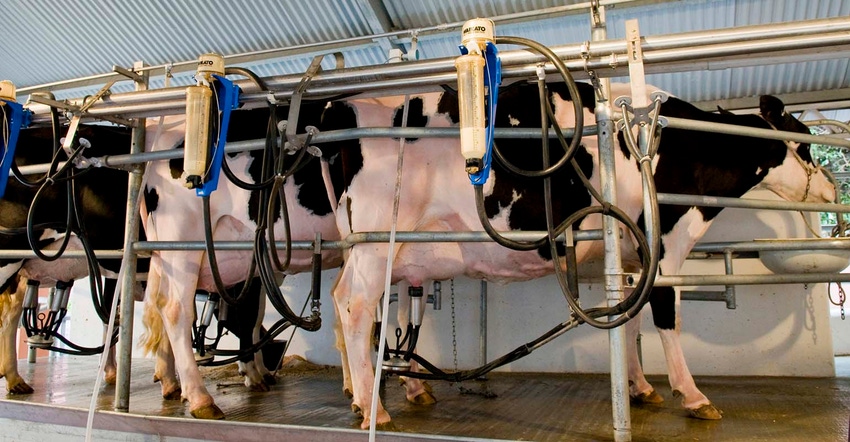
As the world continues to slowly emerge from COVID-19, one thing is for certain; demand for dairy is strong. With restaurants re-opening across the United States, cheese and butter demand continues to grow. Class III milk futures prices, while volatile, have been reflective of improved dairy demand, as prices overall are in an uptrend.
At the beginning of 2021, Class III milk futures were trading at the $16 level. Currently, front month futures prices are in the mid-$18 region. While volatility is expected over the coming months for dairy prices, the outlook remains friendly overall thanks to strong demand. Here are a few additional components of demand and pricing opportunities to be aware of as we head into summer.
USDA ends Farmers to Families Food Box Program
A few weeks ago, the USDA announced an end to the Farmers to Families Food Box program. Initially this news added price pressure to Class III milk futures. During 2020 that program was important to help the dairy industry navigate through COVID-19 demand destruction and processing disruptions. The program had been met with mixed emotions, however it did help to push cheese prices to a new all-time high in 2020. With schools and restaurants re-opening, causing a natural uptick in dairy demand, it is perceived that the program is no longer needed. Cheese manufacturers are running strong, and restaurant traffic has increased tremendously across the nation.
Global dairy trade auction
In addition to improving domestic demand, global dairy demand is also robust. Overall, global dairy prices remain strong and haven’t waivered too much off of recent highs. This week’s Global Dairy Trade (GDT) was quietly mixed at higher values, with little price movement among the products. The overall GDT Price Index reduced slightly by 0.10% to 1,298 points, which is 48 points off of its recent high. The rest of the individual products had pretty small price movements. GDT cheddar added 1.20%, GDT butter fell 0.60%, GDT skim milk powder was flat, and GDT whole milk powder added 0.40%. GDT cheese added 1.20% and closed at $2.01/lb. This compares to the U.S. price of $1.8025 per pound, pointing out how U.S. cheese is still competitively priced compared to the rest of the world.
U.S. dairy exports up 12%
Looking at recent export data released, the competitive U.S. dairy prices have been supportive to global demand and our U.S. export market. U.S. dairy exports were up over 12% more than February of last year. Butter exports jumped 110% versus last year, which helps to show why the US market has been pushing steadily higher.
Whey at best price since 2014
Strong export and spot market demand has driven the whey market up to its highest levels since late 2014. The whey rally is also overall supportive to Class III milk prices. The recent high price has been$0.6900 per pound, which was near the 2014 high of $0.6975 per pound.
Milk production report
The U.S. March milk production total came in at a 1.80% increase from last year. U.S. milk cows on farms was 9.468 million head, which is 8,000 head more than February. It is also 77,000 head more than the same month last year. Milk production growth remains strong, here are some state-by-state growth rates for March: New York (+0.50%), Pennsylvania (-1.50%), California (+1.50%) Wisconsin (+3.70%), Michigan (+3.50%), Minnesota (+7.60%). While the 1.80% increase is noted, milk production overall is actually trending lower in 2021. Heading into summer, the market will look to see which way milk production continues to trend.
While milk futures have traded lower recently, the market remains in a steady uptrend overall. Global dairy prices are at a premium to the U.S., U.S. dairy exports have been strong, and the feed market continues to push higher. The longer the feed prices stay up at these elevated levels, the better likelihood there could be lower milk production throughout the rest of the year. For now milk futures remain in a range where $18 per hundredweight is supported and $20 per hundredweight is resistance. Trade will have plenty of factors to monitor in the weeks and months ahead.
Reach Naomi Blohm: 800-334-9779 Twitter: @naomiblohm and [email protected]
Disclaimer: The data contained herein is believed to be drawn from reliable sources but cannot be guaranteed. Individuals acting on this information are responsible for their own actions. Commodity trading may not be suitable for all recipients of this report. Futures and options trading involve significant risk of loss and may not be suitable for everyone. Therefore, carefully consider whether such trading is suitable for you in light of your financial condition. No representation is being made that scenario planning, strategy or discipline will guarantee success or profits. Any decisions you may make to buy, sell or hold a futures or options position on such research are entirely your own and not in any way deemed to be endorsed by or attributed to Total Farm Marketing. Total Farm Marketing and TFM refer to Stewart-Peterson Group Inc., Stewart-Peterson Inc., and SP Risk Services LLC. Stewart-Peterson Group Inc. is registered with the Commodity Futures Trading Commission (CFTC) as an introducing broker and is a member of National Futures Association. SP Risk Services, LLC is an insurance agency and an equal opportunity provider. Stewart-Peterson Inc. is a publishing company. A customer may have relationships with all three companies. SP Risk Services LLC and Stewart-Peterson Inc. are wholly owned by Stewart-Peterson Group Inc. unless otherwise noted, services referenced are services of Stewart-Peterson Group Inc. Presented for solicitation
The opinions of the author are not necessarily those of Farm Futures or Farm Progress.
About the Author(s)
You May Also Like






